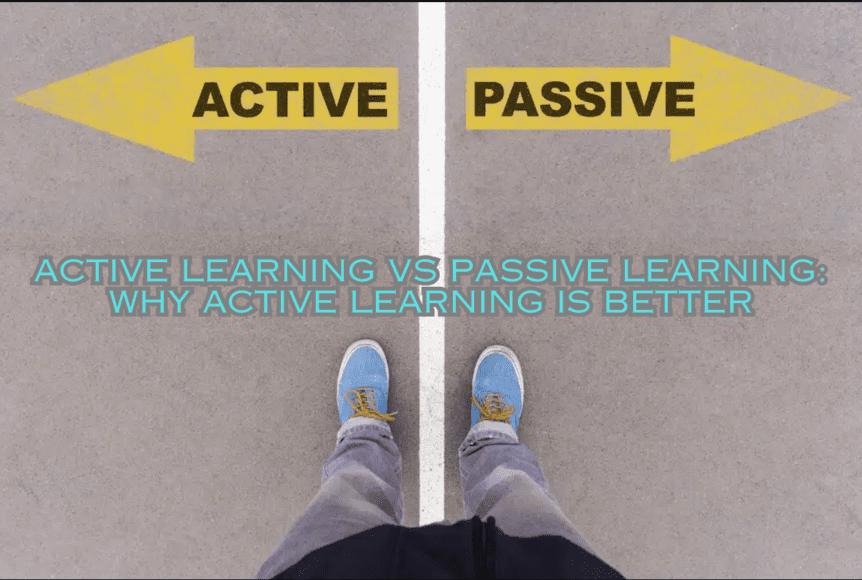Active Learning vs Passive Learning: Why Active Learning is Better
It is a fact that for most people, we forget a lot of what we are taught. Think about your time at school as a child and how much of the information you were taught then that you no longer remember. This will be all too familiar if you are a parent and, like most others in your position, have to do regular Google searches to refresh your memory when helping your children with their homework.
But there are also things that we remember well, things that become second nature to us. Examples include using our phones, a piece of software that we use regularly, or driving a car. We don’t forget how to do those things.
The difference is often whether or not you engage in active learning or passive learning. Here’s a shortcut to the takeaway of this blog – we are much better at remembering things with active learning.
What is the Difference Between Active Learning and Passive Learning
Active learning is where learners are involved in the training process. They learn by doing, practicing, discussing, experimenting, and even by teaching others. Active learning can also involve the learner shaping their own learning experience through, for example, personalised training.
Passive learning is where learners receive information with minimal direct involvement in the learning process except through listening, watching, reading, or observing. Examples of this type of training include lecture-style training courses, manuals, videos, and demonstrations.
There is a place for both types of training in corporate environments – active and passive – as there are topics, situations, and limitations that make one option more viable than the other. That said, in most situations, active learning is better than passive learning. Let’s explore why.
Why Active Learning is Better than Passive Learning
Passive learning can be effective when learning facts, but developing a deep and rounded understanding of the topic is best achieved with active learning. With active learning, concepts and ideas move from the theoretical world to the real world, so they can make more sense. Learners can also make better connections between concepts and ideas when they are involved in active learning experiences.
Active learning also helps to develop critical thinking skills, so it is ideal for topics where you want to equip learners to deal with dynamic, unpredictable, and changing situations. Interacting with colleagues or dealing with unhappy customers are two good examples.
The critical thinking skills that active learning can help to develop can also improve the learner’s out-of-the-box thinking capabilities while also helping them adapt to different situations.
Engagement in corporate training courses is an important priority – active learning activities and courses can help to increase engagement. Active learning also enhances the learner experience and leads to greater learner satisfaction.
How to Create Active Learning Experiences
It was difficult in the past to develop consistent and effective active learning experiences in large companies. Online training tools and resources have made the process much easier as you can create e-learning courses that contain elements that move the learner into an active learning mode. Examples include:
- Scenarios – scenarios are one of the most effective ways of adding active learning elements to your e-learning courses. In scenarios, you present learners with a situation and ask them to take actions or make decisions to achieve a desired outcome.
- Quizzes – quizzes are self-explanatory but not all quizzes are equal. Learners will have a more active learning experience if the quiz provides detailed assessments of answers and additional help rather than simple right/wrong markings.
- Interactive videos – interactive videos transform your video training content from passive to active.
- Gamified elements – gamified elements in your e-learning courses, such as scoreboards or badges, increase interactivity, making the learning experience more active.
Where possible, you should also look beyond the course to include on-the-job training features as part of your strategy to ensure learners get the opportunity to put into practice what they have learned on the course.
Implementing an Active Learning Strategy
There doesn’t have to be a major switch in the way your organisation provides training to employees in order to implement an active learning strategy. This especially applies if you already provide learners with e-learning courses and other online training materials.
Including active learning elements in the e-learning courses you create, such as those described above, will improve the quality of your training, the results you achieve, and the experiences of learners.
